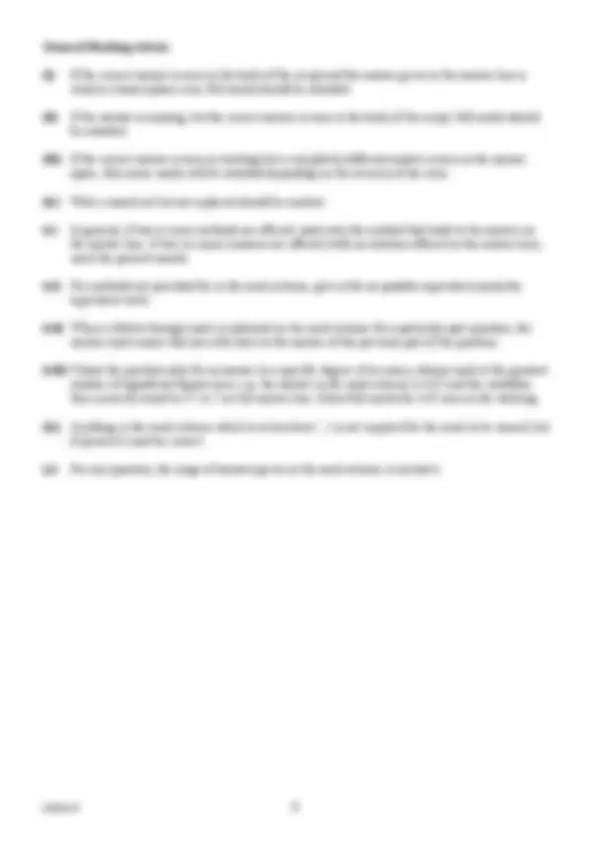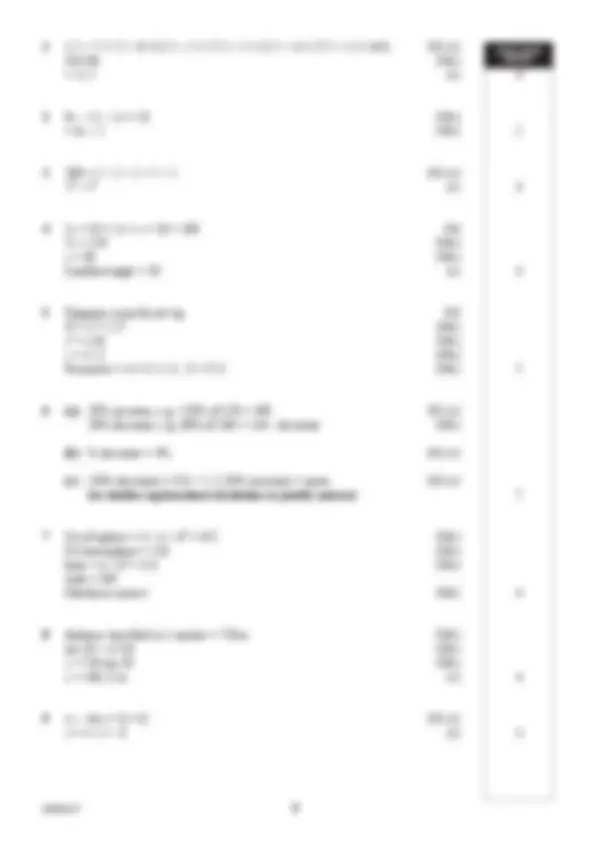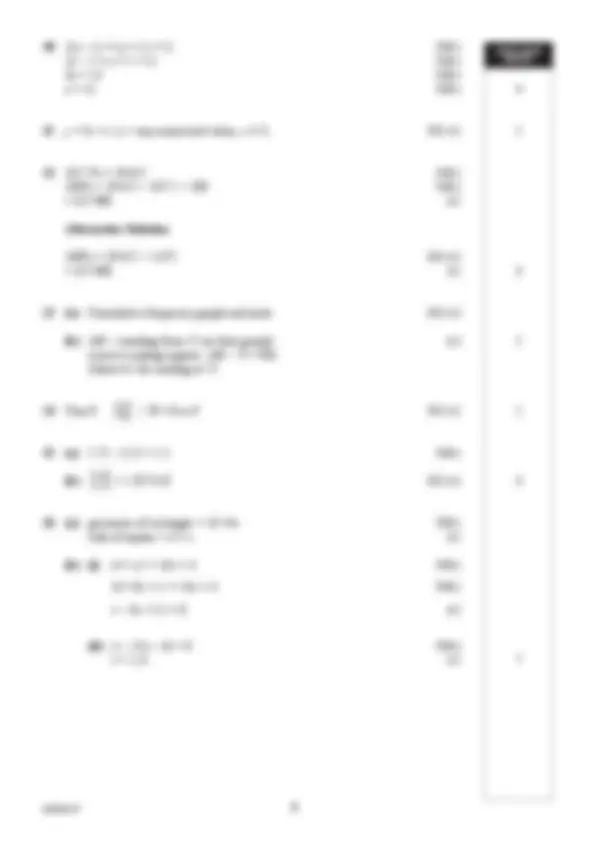





Study with the several resources on Docsity

Earn points by helping other students or get them with a premium plan


Prepare for your exams
Study with the several resources on Docsity

Earn points to download
Earn points by helping other students or get them with a premium plan
Community
Ask the community for help and clear up your study doubts
Discover the best universities in your country according to Docsity users
Free resources
Download our free guides on studying techniques, anxiety management strategies, and thesis advice from Docsity tutors
The mark scheme for the GCSE Mathematics Higher Tier Calculator Paper M4 exam held on 21 May 2019. It provides the correct answers and marking guidelines for each question in the exam. The marking scheme explains the different types of marks (M, A, and MA) and the process of follow-through marking.
What you will learn
Typology: Slides
1 / 7

This page cannot be seen from the preview
Don't miss anything!




General Certificate of Secondary Education 2019
11938.01 F
TUESDAY 21 MAY, 9.15am–11.15am
Introduction
The mark scheme normally provides the most popular solution to each question. Other solutions given by candidates are evaluated and credit given as appropriate; these alternative methods are not usually illustrated in the published mark scheme.
The marks awarded for each question are shown in the right hand column and they are prefixed by the letters M , A and MA as appropriate. The key to the mark scheme is given below:
M indicates marks for correct method.
A indicates marks for accurate working, whether in calculation, reading from tables, graphs or answers. Accuracy marks may depend on preceding M (method) marks, hence M0 A1 cannot be awarded, i.e. where the method is not correct no marks can be given.
MA indicates marks for combined method and accurate working.
A later part of a question may require a candidate to use an answer obtained from an earlier part of the same question. A candidate who gets the wrong answer to the earlier part and goes on to the later part is naturally unaware that the wrong data is being used and is actually undertaking the solution of a parallel problem from the point at which the error occurred. If such a candidate continues to apply correct method, then the candidate’s individual working must be followed through from the error. If no further errors are made, then the candidate is penalised only for the initial error. Solutions containing two or more working or transcription errors are treated in the same way. This process is usually referred to as “follow-through marking” and allows a candidate to gain credit for that part of a solution which follows a working or transcription error.
Positive marking:
It is our intention to reward candidates for any demonstration of relevant knowledge, skills or understanding. For this reason we adopt a policy of following through their answers, that is, having penalised a candidate for an error, we mark the succeeding parts of the question using the candidate’s value or answers and award marks accordingly.
Some common examples of this occur in the following cases:
(a) a numerical error in one entry in a table of values might lead to several answers being incorrect, but these might not be essentially separate errors;
(b) readings taken from candidates’ inaccurate graphs may not agree with the answers expected but might be consistent with the graphs drawn.
When the candidate misreads a question in such a way as to make the question easier only a proportion of the marks will be available (based on the professional judgement of the examining team).
AVAILABLE
22 (a) (2 a – b )( a + 4 b ) M1 A
(b) (^) ( )( )
x x
x x x x x
x 2 1 4
^ + h + # – MA
x x
x x x x x
x 2 1 4
g g
g MA
x
x x 4 x
] g MA
x^ or
x x
x 4
] g (^) – A1 6
Total 100
AVAILABLE MARKS